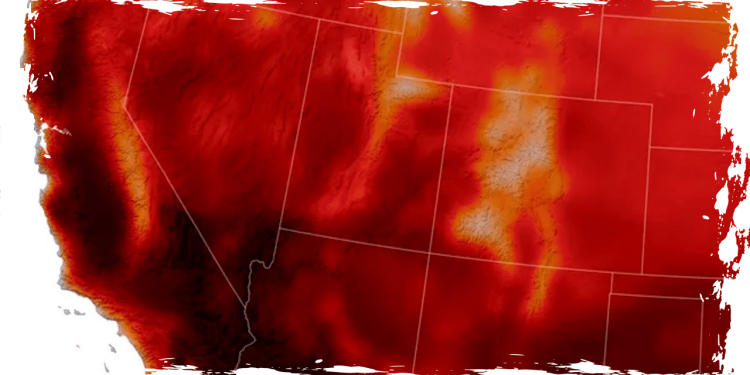The United States is in for a week of weather extremes, with both the Midwest and Northeast set to face a scorching heat wave, while the Pacific Northwest will experience an unseasonably chilly start.
It’s not uncommon to experience snow in June while exploring the Rockies. Yes, you read that right, snow in the middle of summer!
According to the National Weather Service, the East, Midwest, and Great Lakes region should brace themselves for soaring temperatures in the 90s at the start of this week. The heatwave is expected to persist, and residents are advised to take necessary precautions.
According to Accuweather’s meteorologist, Tom Kines, the middle and eastern regions of the country are expected to experience scorching temperatures that may even make headlines.
According to his statement, many places including the Midwest, Ohio Valley, Great Lakes, mid-Atlantic, and Northeast will experience their first 90-degree temperatures of the year.
Next weekend will be marked by scorching temperatures that are expected to persist without any respite.
According to Kines, temperatures in certain areas are expected to reach the 90s and even near 100. The combination of high temperatures and humidity will make it feel even hotter, with the heat index reaching 9 or 10 degrees above the actual temperature. This means that many people may struggle with the uncomfortable conditions throughout the week.
It’s not entirely unusual to experience a heat wave during this time of year, but what sets this one apart is its early arrival.
According to him, this kind of heat usually hits in July and August, but it’s arriving sooner than expected.
On Monday, the National Weather Service’s Heat Risk map reveals a significant area of major heat, stretching from West Virginia to Kansas, as shown by the broad splash of red.
Parts of Iowa, Illinois, and Missouri are currently experiencing extreme heat, with the danger level reaching purple.
According to the Weather Service, if an individual lacks proper cooling and hydration, a level of rare and/or long-duration extreme heat with little to no overnight relief can affect them. This can have a significant impact on health systems, heat-sensitive industries, and infrastructure.
The intense heatwave had engulfed significant regions of Iowa, Wisconsin, Illinois, and Michigan by Tuesday. By Thursday, it had spread into New York state and New Hampshire.
‘It’s June now and we’re talking about snow’
The scorching heatwave has engulfed the middle and eastern regions of the country, but there is a respite for some areas in the northern Rocky Mountains. These regions are experiencing much cooler temperatures than usual, and some even have a chance of snowfall.
According to Kines, there will be some chilly nights ahead with temperatures dropping into the 20s and low 30s. In addition, areas in the northern Rockies can expect to receive snowfall.
According to meteorologist Kines, snowfall is expected to occur at higher elevations, which are usually above 6,000 feet. Due to this, it is unlikely to affect a significant number of populated areas. However, Kines pointed out that the occurrence of snow in June is certainly a noteworthy occurrence.
According to him, the temperatures will gradually rise back to their normal range, reaching the 60s and close to 70s by the middle of the week.
Want to flee the heat? Try the Pacific Northwest
The Pacific Coast is experiencing below-average temperatures, with Oregon and Washington state being particularly affected. Seattle, for example, is predicted to have a high of only 64 degrees on Monday, while Portland, Oregon will see temperatures reach a maximum of 66 degrees.
If you’re seeking respite from hot weather, a brief getaway to the Pacific Northwest may be just the ticket. Usually, temperatures in the Seattle-Portland region hover in the range of 70-75°F at this time of year. However, the forecast for the next few days predicts temperatures peaking only in the mid-60s.
Kines reported that Seattle experienced a high temperature of 60 degrees on Saturday.










